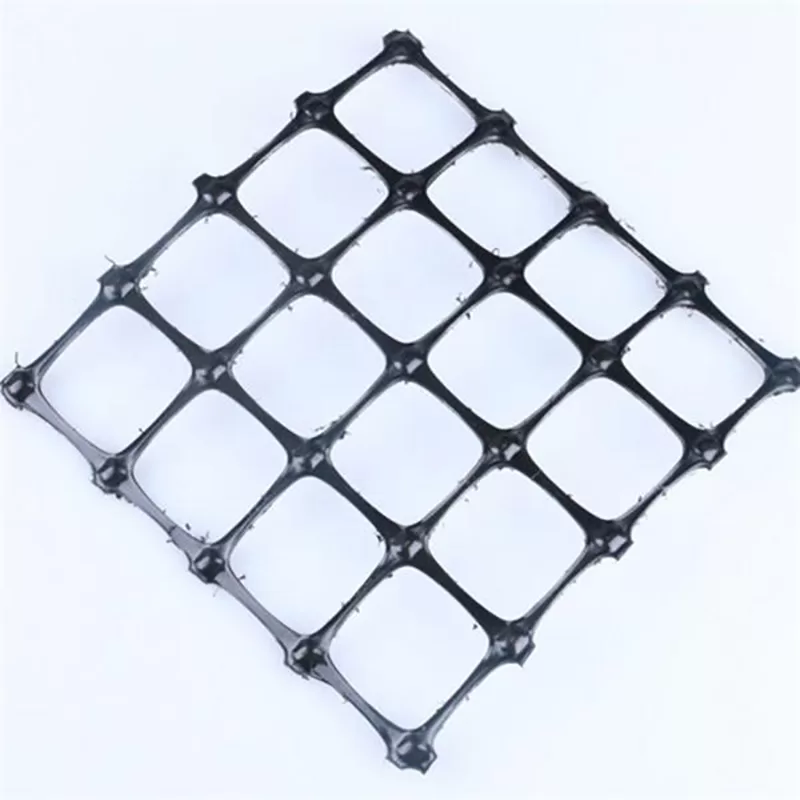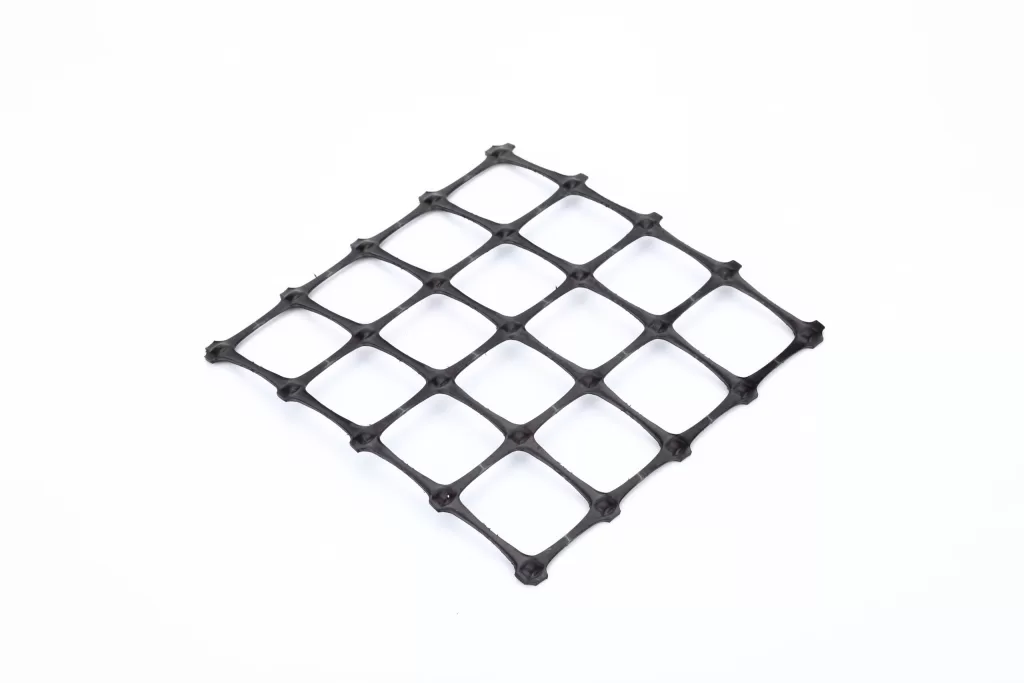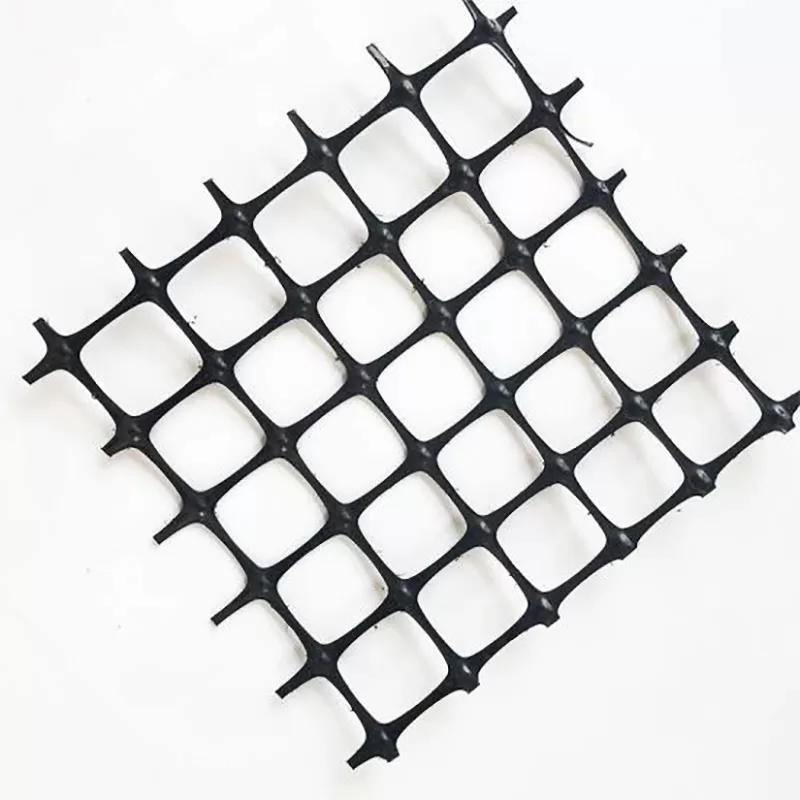+86-159 9860 6917
info@geofantex.com
geofantex@gmail.com
+86-400-8266163-44899
Geogrid, also known as retaining wall mesh, is primarily used to distribute concentrated loads over wider areas. It is commonly used under footings, roadways, and other regions requiring subgrade support. Another significant application is in reinforcing retaining walls. For homeowners or builders considering geogrid, it is a worthwhile investment. It is relatively inexpensive and significantly enhances the strength of driveways, patios, and subgrades.

Types of Geogrid
Geogrids are essential materials used in various civil engineering and construction projects, designed to reinforce soil, stabilize slopes, and support road bases. Here’s a breakdown of the types of geogrids, their manufacturing processes, and specific applications:
Woven Geogrids
- Manufacturing Process: These geogrids are made by interlacing strands of high-tensile polymer fibers, typically polyester or polypropylene, into a grid-like structure.
- Applications:
- Soil reinforcement
- Slope stabilization
- Base reinforcement in roads and pavements
- Characteristics:
- High tensile strength and durability
- Good for applications requiring resistance to movement and shear
- Advantages:
- Excellent load distribution
- Ideal for heavy traffic areas
- Disadvantages:
- Can be expensive compared to other types
- Less flexibility, which can lead to cracking under extreme conditions
Knitted Geogrids
- Manufacturing Process: Made by knitting synthetic fibers, usually polyester, into a flexible grid pattern.
- Applications:
- Reinforcement of road and railway sub-bases
- Slope and embankment stabilization
- Characteristics:
- More flexible than woven geogrids
- Provides high strength but less rigidity
- Advantages:
- Flexible and resistant to cracking
- Easy to install
- Disadvantages:
- Lower tensile strength than woven geogrids
- May not perform well under high loads
Extruded Geogrids
- Manufacturing Process: Created by extrusion, where polymer material is heated and forced through a mold to form a grid pattern.
- Applications:
- Reinforcement of soil in various infrastructure projects, like roads and railways
- Slope stabilization and embankments
- Characteristics:
- Robust and durable
- High resistance to UV degradation
- Advantages:
- Strong and durable under heavy loads
- Excellent resistance to environmental conditions like moisture and UV rays
- Disadvantages:
- Higher production costs due to manufacturing process
- Can be less flexible than knitted geogrids
Biaxial Geogrids
- Manufacturing Process: These geogrids are formed by stretching the polymer in both machine and transverse directions, creating a grid that offers strength in both axes.
- Applications:
- Base reinforcement in pavements and road construction
- Soil reinforcement under heavy load-bearing structures
- Characteristics:
- Provides high tensile strength in both directions
- Advantages:
- Great for applications requiring reinforcement in multiple directions
- More cost-effective than uniaxial geogrids for certain applications
- Disadvantages:
- May not be suitable for all soil types
- Can be prone to elongation under extreme stress
Uniaxial Geogrids
- Manufacturing Process: These geogrids are stretched in only one direction, providing strength in that axis while being flexible in the perpendicular direction.
- Applications:
- Soil reinforcement, especially in retaining walls and steep slopes
- Characteristics:
- High tensile strength in one direction
- Less effective in other directions
- Advantages:
- Perfect for applications that require reinforcement in one specific direction (e.g., slopes or walls)
- Ideal for heavy load applications
- Disadvantages:
- Can perform poorly when forces act in the opposite direction
Geogrids are a versatile and crucial component in civil engineering projects. Each type has specific characteristics that make it suitable for different applications. The choice between woven, knitted, extruded, biaxial, or uniaxial geogrids depends on factors like load requirements, environmental conditions, and flexibility needs. Understanding the advantages and disadvantages of each can help optimize material choice for the project.
How Does Geogrid Work?
A geogrid is a type of geosynthetic material used to reinforce soil, typically made from polymers such as polyester, polypropylene, or high-density polyethylene. Geogrids are designed with a grid-like structure that offers high tensile strength, allowing them to improve the stability of soil and increase the bearing capacity of foundations.
Primary Materials & Design Characteristics:
- Polymer-based: Typically made from synthetic polymers for durability and flexibility.
- Mesh structure: A network of open cells or apertures, which allows the material to interlock with the soil, providing reinforcement.
- High tensile strength: Designed to withstand the stresses and strains of heavy loads.
Mechanisms of Soil Reinforcement
Geogrids enhance the stability of soil in several ways:
- Load distribution: By spreading the load over a wider area, geogrids reduce pressure on the underlying soil, preventing failure under heavy loads.
- Soil confinement: The grid structure confines the soil particles, preventing lateral movement and improving the shear strength of the soil.
- Improved compaction: The interaction between the soil and geogrid helps compact the material, further enhancing its structural integrity.
- Increased frictional resistance: Geogrids increase friction between the soil particles, preventing sliding or shifting.
Applications of Geogrids
- Road Construction: Geogrids are commonly used in the construction of roads and highways, where they enhance the load-bearing capacity of the soil subgrade, preventing deformation under traffic.
- Retaining Walls: Geogrids are used to reinforce soil behind retaining walls, improving the stability of slopes and preventing soil erosion.
- Embankments and Slopes: In areas where embankments or slopes are subject to high loads or erosion, geogrids provide additional reinforcement, improving the long-term stability of these structures.
- Foundations and Pavement Bases: Geogrids can be used in foundation systems, especially in areas with weak soils, to prevent settlement and maintain structural integrity.
Benefits of Geogrids
- Enhanced load-bearing capacity: Improves the structural performance of roads, embankments, and foundations.
- Cost-effective: Reduces the need for deep excavation or the use of expensive soil treatment methods.
- Reduced soil erosion: Prevents erosion in areas where vegetation or other erosion control methods are not feasible.
- Durability: Geogrids are highly resistant to degradation from UV exposure, temperature changes, and biological factors.
Challenges of Using Geogrids
- Installation complexity: Proper installation requires trained professionals to ensure that the geogrid is properly aligned and tensioned.
- Initial cost: While cost-effective in the long run, geogrids may have a higher upfront cost compared to traditional reinforcement materials.
- Environmental concerns: Some geogrids, especially those made from petroleum-based materials, may have environmental impacts during production and disposal.
Geogrids play a crucial role in modern civil engineering, offering a reliable and cost-effective solution for reinforcing soil and improving the stability of structures. Their ability to enhance load-bearing capacity, reduce soil movement, and prevent erosion makes them a key component in the construction of roads, retaining walls, and embankments. Despite challenges such as installation complexity and environmental considerations, geogrids remain an essential tool in geotechnical engineering for ensuring the durability and safety of infrastructure.
Uniaxial Geogrid in Retaining Walls
Uniaxial geogrid is commonly used in retaining walls. Unlike biaxial or triaxial grids, uniaxial geogrid is loaded in one direction along its stronger axis. It does not control settlement but serves as an anchor. The stronger axis is thicker and stiffer than the fabric or thread holding the grid together, which is crucial for the grid’s performance in retaining walls.
In retaining wall construction, uniaxial geogrid uses the soil’s weight to support the wall by anchoring it to the soil. This integration causes the retained soil to act as a single mass with the wall, holding back unreinforced soil from behind. The grid is placed on top of the block section and pinned by the next course of blocks, ensuring the strong axis runs crosswise to the wall face. The backfill material is then compacted at the wall’s end to increase tension.
Importance of Proper Geogrid Installation
Proper installation of geogrid is critical. The reinforced soil, when compacted, pulls back on the retaining wall blocks, helping to hold the wall up as a reinforced structure. This interlocking of retained soil and blocks allows the entire mass to resist unreinforced soil. Geogrid placement, lengths, and types are specified in design packages and inspected during construction to ensure compliance with specifications.
Visual Examples
- Side View of Geogrid for a Retaining Wall: A diagram illustrating the proper placement of geogrid in retaining wall construction.
- Example of Poorly Constructed Retaining Wall: An image showing the consequences of improper geogrid installation.
Using geogrid effectively can prevent issues with retaining walls, ensuring they remain sturdy and intact over time.



Get Free Sample
We’ll respond as soon as possible(within 12 hours)






















